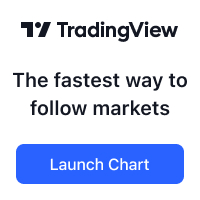Listen, I am going to reveal trading secret again! 🙂
I have been working on position sizing and risk management stuffs recently. I am trying to optimize the return of my trading since I see consistency in my trading recently. So, instead of increase setups or trading opportunities, I am thinking of stick to the old trick but increase position size, etc. However, this is not an easy subject.
I come across Variable Fractional Percent (VFP) from chaffcombe’s site.
He is a full-time currency trader, who is more into automated trading. Here is what I found from his explanation of Variable Fractional Percent (VFP)
Firstly you need to know your daily Net Asset Value (NAV) gain or loss in percent.
Start trading at a conservative 5% FFP (or whatever suits you). But instead of using a Fixed Fractional percent, you use a range say 2%-25%. Move up and down the scale by adding or subtracting half of your last daily NAV percentage.
For example start at 5% FFP
Next day profit on trades = 1.5%
Therefore your next FFP = 5 + (1.5 * 0.5 ) = 5.75%Say you then lose 3%
Next FFP = 5.75 + (-3 * 0.5) = 4.25%Obviously use ranges and a daily factor (here 50%) that suits you, but you’ll find this method really rewards good methods, and lightens up very quickly on bad.
The idea that catches my attention is that the method utilizes part of your previous day’s trading profit to determine the position size of your next trade. They put you in the condition that when you are on a roll, you are able to profit as much as possible, while during the drawdown, the system is reducing your position size accordingly.
The prerequisite of this management method is to have a consistent trading system. It doesn’t turn a losing system to a profitable system, but it maximizes the return of a profitable system and reduce the damage from a losing system.
I thought this idea provides some food for thought.


who am i to argue with a full-time trader, but…this will have u trading your largerst position size going into a period of drawdown, and your smallest postion size when u come out
drawdowns are routine, and a part of trading…that puts u in the postion of taking your largest losses after a roll, and your smallest winners after coming out…maybe it all evens out, and maybe it doesn’t…i just think that’s something to consider and factor in…if u have enough stats, u could prolly test it both ways, and see how it would have worked…maybe he’s right, but its worth testing
who am i to argue with a full-time trader, but…this will have u trading your largerst position size going into a period of drawdown, and your smallest postion size when u come out
drawdowns are routine, and a part of trading…that puts u in the postion of taking your largest losses after a roll, and your smallest winners after coming out…maybe it all evens out, and maybe it doesn’t…i just think that’s something to consider and factor in…if u have enough stats, u could prolly test it both ways, and see how it would have worked…maybe he’s right, but its worth testing
John: I agree with your points. Since FFP is growing together with winning trades, I am thinking of putting a cap to the total risk, we definitely do not want to risk 100% of our equity in one day or one trade, do we?
gav: i hadn’t thought of that…that would be the ultimate bad luck if ur winning streak lasted so long as to require a 100% bet…one trade, and ur wiped out
gav: i hadn’t thought of that…that would be the ultimate bad luck if ur winning streak lasted so long as to require a 100% bet…one trade, and ur wiped out
From a statistical perspective, the question which would need answering is whether your trading results are independent or whether there is memory from day to day. If it’s the former, then you wouldn’t want to use this type of approach. If, on the other hand, your results do have some memory then this strategy could work.
From a statistical perspective, the question which would need answering is whether your trading results are independent or whether there is memory from day to day. If it’s the former, then you wouldn’t want to use this type of approach. If, on the other hand, your results do have some memory then this strategy could work.
Like all POW (progress on win) MM systems you are likely to be trading largest at the start of your worst DD, tis life.
This strategy might be put in context, it was I believe used by Chaffcombe as a part of many smaller systems/accounts running at the same time, with the idea being to feed the stars and starve the dogs with a sliding FF risk scale. I certainly otherwise wouldn’t look upon 5% FF as conservative over my whole capital 🙂 though if it was a small sub account then maybe.
In whole of portfolio testing I place limits on max leverage way way below 5% and find even a daily factor of 15% can lead to loading up fairly quickly, it’s a potentially very aggressive approach to MM and should be treated as such.
Like all POW (progress on win) MM systems you are likely to be trading largest at the start of your worst DD, tis life.
This strategy might be put in context, it was I believe used by Chaffcombe as a part of many smaller systems/accounts running at the same time, with the idea being to feed the stars and starve the dogs with a sliding FF risk scale. I certainly otherwise wouldn’t look upon 5% FF as conservative over my whole capital 🙂 though if it was a small sub account then maybe.
In whole of portfolio testing I place limits on max leverage way way below 5% and find even a daily factor of 15% can lead to loading up fairly quickly, it’s a potentially very aggressive approach to MM and should be treated as such.
Take a look at EurAud. I think it is a sell. I have been trying for a while to pick a top in Eur (very expensive) but I think this could be a less risky way to play it.
Let me know what you think.
Bsnker
Take a look at EurAud. I think it is a sell. I have been trying for a while to pick a top in Eur (very expensive) but I think this could be a less risky way to play it.
Let me know what you think.
Bsnker
John: I agree with your points. Since FFP is growing together with winning trades, I am thinking of putting a cap to the total risk, we definitely do not want to risk 100% of our equity in one day or one trade, do we?